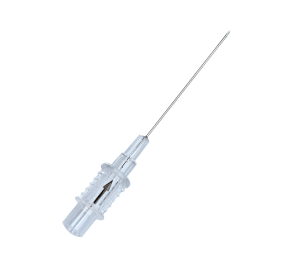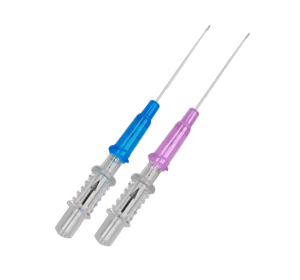Categories
Procedure
Merit developed a proprietary flat-wire braiding technology that was able to make the sheath’s inner wall 13% thinner than the competition, which kept the OD the same yet made the ID larger. The wall was also stronger, increasing kink resistance by 23% as compared to the competitor, and increasing compression resistance by 124%.
124% more resistant to side wall compression than the leading competitor
124%
MORE COMPRESSION RESISTANCE
23% more kink resistant than the leading competitor
23%
MORE KINK
RESISTANCE
13% thinner wall with higher resistance to kinking and side wall compression than leading competitor

13%
THINNER WALL
Requires 15% less force to insert than leading competitor. Excellent transitions and hydrophilic coating facilitate smooth insertions.
15%
LESS INSERTION
FORCE

Short bevel needle with bevel indicator on hub, along with a proprietary coating helps to ensure smooth insertion. A straightforward, accurate single puncture with a metal needle can help lower the risk of spasm.2

• Thin walled metal cannula with a flexible, radiopaque catheter
• Smooth catheter-to-needle transition for easy insertion
• Excellent for two-wall access technique
• Up to 17% faster flash back & 17% less insertion force over our leading competitor**

Kits available with stainless steel spring coil, nitinol or stainless steel mandrel, or plastic jacketed guide wires providing options for your clinical practice.
REFERENCES
*6F Data on File. Merit assumes no responsibility to update the test data.
**Data on File. Merit assumes no responsibility to update the test data.